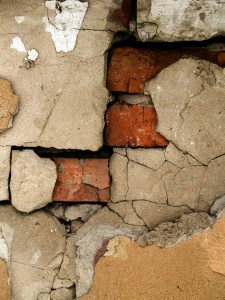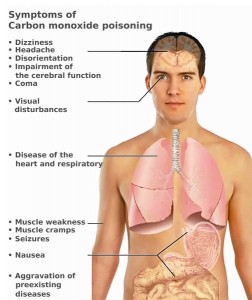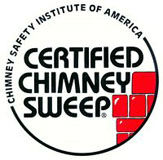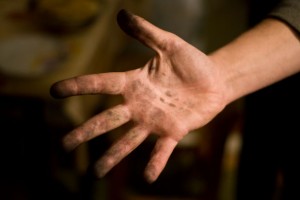Chimney Services » Chimney Maintenance » Page 5
Our Company Blog
by Mike O'Mara | Mar 6, 2015 | Chimney Inspections, Chimney Maintenance, Chimney Sweeping

Schedule a chimney sweeping and inspection as part of your spring cleaning!
March is upon us, which means spring is finally here. For homeowners, the arrival of spring means it is time to get started on annual spring cleaning chores. If you have a fireplace or wood stove in your house, that means your chimney should also be included. Weststar Chimney Sweeps is ready to help you with your chimney cleaning chores, and we would like to tell you more about our chimney sweeping process.
Why should I have my chimney cleaned and inspected in the spring?
It makes sense to have your annual sweeping done in the spring because most people schedule their annual chimney inspections in the fall, so you will not have a problem getting the appointment you want. Also, the sooner you have your chimney looked at after the heating season, the better. If there are problems that need repairing, you need to get them repaired quickly so no more costly structural damage occurs. The Chimney Safety Institute of America (CSIA) recommends homeowners have their chimneys inspected annually, so why not get into the habit of scheduling this appointment in the spring?
What should I expect from a chimney sweeping and inspection from Weststar Chimney Sweeps?
When you schedule a chimney sweeping and inspection with Weststar Chimney Sweeps, one of our licensed and certified technicians will come to your home and begin the inspection and cleaning process. Using modern technology, we use video cameras to allow us to closely examine the interior of your chimney and decide which type of cleaning technique we will need to do, based on the type of creosote build-up in your chimney and what kind of chimney you have. We use a few different chimney sweeping techniques, which include:
Standard Sweeping
Using the typical rotating brushes on long handles, along with a high-powered vacuum with a HEPA filter to keep debris and soot from getting in your home, this technique is effective for getting rid of average creosote deposits; however, if you have any major creosote build-up, as in 3rd stage, you will need a heavier-duty sweeping.
Mechanical Cleaning
In order to remove hard or glazed creosote deposits, high-speed rotating wire brushes, plastic cables, or specials chains are used to do the sweeping.
Chemical Cleaning
Sometimes mechanical cleaning is not enough, and chemicals may have to be used along with the high-speed rotating power tools to get rid of big deposits of glazed creosote.
What happens after the chimney inspection and sweeping is completed?
Once we do your sweeping and inspection, we will assess our findings and determine whether or not you need any repairs done to your chimney. Other than creosote build-up, the most common damage to chimneys seen after winter is water damage from leaks. If left unrepaired, this can lead to further, more costly structural damage. Weststar Chimney Sweeps can handle all of your chimney repair needs, if repair is necessary.
Do not forget your chimney when you are spring cleaning. Contact Weststar Chimney Sweeps to make an appointment for your annual chimney sweep and inspection.
by Mike O'Mara | Feb 6, 2015 | Chimney Inspections, Chimney Maintenance

California is known for having earthquakes that can damage your chimney
As residents of California, we are familiar with dealing with earthquakes and the property damage they can cause. Did you know the most common earthquake property damage is chimney collapse? Not only is this true in our state, but also in other areas that suffer earthquakes in this country. The number of chimneys lost every year to earthquake damage is staggering. One reason for this great structural loss is chimneys are often ignored when preparing for earthquakes and the damage they can cause. Weststar Chimney Sweeps would like to tell you more about the effect of earthquakes on chimneys.
How do earthquakes cause a chimney to collapse?
It goes without saying that earthquakes cause the ground to shake resulting in buildings enduring forces to which they are not normally subjected toward. These forces lead to a deterioration of the brickwork and can cause a chimney to collapse. Even minor seismic events can cause this to happen to your chimney, so it’s important to have your chimney routinely checked – especially in seismic hotbeds.
What is the best prevention against chimney collapse during seismic activity?
The chimneys that are most commonly damaged are un-reinforced chimneys, according to InspectAPedia, an online encyclopedia of building and environmental inspection, testing, diagnosis, and repair topics.
What are the dangers of a chimney collapse?
No one can predict which way a chimney will collapse. If a chimney were to collapse on the house, it could be deadly. People have even become trapped inside by a collapsed chimney. Even if the chimney does not fall onto the house, it could fall on a neighbor’s home or on someone outside.
What can I do to prepare my un-reinforced chimney for an earthquake?
You can have your chimney braced, but this does not guarantee it will not collapse. You can also remove the masonry and use a metal flue that is surrounded by a wooden box. This box can be covered with brick veneer above the roof line.
What is the best thing I can do to be sure my chimney is sturdy enough to withstand seismic activity?
The best way to ensure your chimney is safe from earthquake damage is to have it inspected every year by Weststar Chimney Sweeps. We have experience in knowing where earthquake damage can occur and exactly what to look for to be certain your chimney is safe during seismic activity.
Have any questions about how earthquakes can affect chimneys? Contact Weststar Chimney Sweeps to find out whatever you need to know.
by Mike O'Mara | Nov 15, 2014 | Chimney Maintenance
The thought of the threat of carbon monoxide poisoning happening in your home is very frightening; however, neglecting regular chimney maintenance can result in carbon monoxide leaking into your home without you even knowing it. Odorless, tasteless, and invisible, this toxic gas can become trapped within your house. If you do not have a carbon monoxide alarm installed to alert you of this danger, you and your family could get very sick or even die from continuously inhaling this poisonous gas. Another way to be safe from the dangers of carbon monoxide poisoning is to schedule an annual chimney sweeping and inspection from Weststar Chimney Sweeps. This step can stop this gas from entering your home in the first place. We would like to inform you about these dangers so that you can best protect yourself and your family.

How Does Carbon Monoxide Affect My Body?
When you breathe in carbon monoxide, the poisonous gas enters your bloodstream and how your blood treats this gas is the true danger. Hemoglobin, a protein in your blood, will always choose to pick up and carry the carbon monoxide and to ignore oxygen. Of course, we need oxygen flowing through our blood to keep our cells from suffocating. The amount of damage caused depends on how long and intense you are exposed to inhaling carbon monoxide, which makes detecting and preventing its presence so crucial.
How Common Are Deaths and Illnesses Due to Carbon Monoxide Poisoning?
According to the Chimney Safety Institute of America (CSIA), at least 200 people in the U.S. are killed every year from carbon monoxide poisoning caused by venting problems in their heating appliance systems. Approximately 10,000 cases of sickness related to carbon monoxide are recorded in hospitals each year as well.
What are the Side-Effects and Symptoms of Carbon Monoxide Poisoning?
Side-effects of low-level exposure can include permanent brain and other organ damage. Unfortunately, the symptoms of low-level poisoning are very similar to those of the common cold: headache, dizziness, fatigue, and nausea. This can cause many misdiagnoses of carbon monoxide poisoning, which prolongs the exposure. If these symptoms do not go away, be persistent with your doctor and ask for a blood test to check for levels of this toxic gas. The sooner high levels are found, the sooner life-saving treatment can begin. High-level exposure to carbon monoxide can cause death.
How Does This Gas Come Into My House?
Poor ventilation is the primary cause of carbon monoxide coming into your home; however, the factors behind the venting problems include a damaged or missing chimney flue liner, large deposits of creosote, debris clogging the passageway, and nesting from birds or other animals blocking the flue.
How Can I Prevent Carbon Monoxide from Entering My Home?
All of the factors behind chimney venting problems can be corrected with an annual chimney sweeping and inspection from Weststar Chimney Sweeps. With cases of carbon monoxide-related health issues on the rise, our CSIA-certified chimney sweeps are extra careful to clean out any blockages, check flue liners for cracks and gaps, and replace a deteriorated chimney liner to protect you from the dangers of carbon monoxide poisoning.
If you have not scheduled your annual chimney sweeping and inspection this year, contact Weststar Chimney Sweeps today. Our staff will arrange a chimney sweep visit to your home as soon as possible to prevent carbon monoxide from entering your house.
by Mike O'Mara | Oct 16, 2014 | Chimney Maintenance, fire safety

Look for the CSIA seal when evaluating a chimney company for hire
Hiring a chimney sweep who has been certified by the Chimney Safety Institute of America (CSIA) to perform your annual chimney cleaning and inspecting ensures you have a highly trained and qualified technician doing the job. A CSIA-certified chimney sweep can be entrusted to be certain your chimney is properly cleaned, safe to use, and in excellent working condition. Our chimney sweeps at Weststar Chimney Sweeps have been through the CSIA certification process, which gives them further training, skills, and knowledge in this industry. Our customers often ask us what this certification means, and we would like to answer this by telling you more about the importance of this professional commitment.
What is the CSIA?
A non-profit, educational organization, the CSIA is dedicated to preventing and eliminating of chimney fires, carbon monoxide leaks, and other chimney-related dangers that can result in injuries or death. To achieve this goal, a vast collection of resources is provided to educate the public, chimney and venting system professionals, and fire prevention specialists about the proper maintenance of fireplace, chimney, and venting systems. The CSIA offers the only national certification program in the chimney and venting system industry.
What are the responsibilities and commitments of a CSIA-certified chimney sweep?
When a chimney sweep completes the training for CSIA certification, he or she must uphold specific obligations, which include:
● Practicing CSIA-recommended chimney and venting safety techniques
● Improving skills, extending a knowledge base, and learning new techniques to stay updated on safety standards for the chimney and venting of fireplaces
● Knowing all applicable local building codes concerning chimneys and fully complying with these codes
● Following closely all manufacturers’ installation instructions for chimney and venting products
● Dealing honestly with customers, refraining from unfair and deceptive practices, and informing customers about essential chimney and venting safety procedures
● Behaving professionally and respectfully when performing chimney and venting duties.
What is the process of CSIA certification?
To become certified by the CSIA, one must do the following:
● Attend a one-day intensive review session in person or a one-week review session online
● Pass a one-hour exam based on the 2011 edition of the CSIA publication Successful Chimney Sweeping and the 2013 edition of NFPA 211: Standard for Chimneys, Fireplaces, Vents, and Solid Fuel-Burning Appliances from the National Fire Prevention Association
● Pass an open-book 90-minute exam using his/her copy of 2006 International Residential Code, published by the International Code Council
● Agree to pay the Annual Certification Fee
● Sign the CSIA Code of Ethics
What topics are covered in the certification process?
To receive CSIA certification, one must prove proficiency in the following areas:
● Technical aspects of chimney dynamics and construction
● Skilled performances of the best and current techniques in the industry
● Wood-burning physics and the formation of creosote residue, which is one of the leading causes of chimney fires
● Familiarity of and compliance with all applicable codes, regulations, clearances, and standards
● Care and installation of a variety of types of solid fuel appliances
● Requirements by the US Environmental Protection Agency
To hire one of our CSIA-certified chimney sweeps, contact Weststar Chimney Sweeos today to schedule an appointment for your annual chimney sweeping
by Mike O'Mara | Sep 30, 2014 | Chimney Maintenance, fire safety

Don’t wait another day — schedule your own chimney sweeping today!
With temperatures dropping every day, winter will be here before we know it. Weststar Chimney Sweeps knows you want to start enjoying a warm fire in your fireplace as soon as you can, but we recommend your chimney be professionally swept and inspected by one of our CSIA-certified chimney sweeps before you light that first fire. According to the National Fire Prevention Association (NFPA), at least 12,000 Americans die every year in a house fire. One of the best ways to avoid having a devastating fire at your home is to have your chimney cleaned before the winter season.begins. The Chimney Safety Institute of America (CSIA), the NFPA, and other fire prevention and safety organizations recommend you have your chimney professionally swept and inspected at least once a year. Scheduling this annual sweeping and inspection in the late summer and early fall ensures your fireplace will be safe to use in the winter. We would like to tell you why it is so essential to have your chimney cleaned before you begin using it regularly in the colder months. We would also like to share some fire safety tips from the University of Nebraska-Lincoln.
Have Your Chimney Professionally Cleaned Before Winter
Safety is the main reason you should have your chimney swept and inspected before you light your first fire of the winter season. One of the biggest causes of chimney fires is large accumulations of creosote within your chimney. Developed naturally during the condensation process when the byproducts of combustion exit your chimney, creosote is highly flammable. If you neglect scheduling a professional chimney sweeping and inspection and large amounts of creosote remain inside your chimney, a home fire can be in your near future. Weststar Chimney Sweeps will be sure all creosote will be removed when we clean your chimney. We will also inspect your entire chimney to make sure there are no essential repairs. For example, a cracked chimney liner can lead to dangerous carbon monoxide leaking into your home, which can cause illness and possible death.
Other Safety Precautions for Winter
● Place some sort of shield, such as glass fireplace doors or a mesh screen, around your fireplace to keep sparks from jumping out and igniting a fire in your home.
● Make sure no flammable items are in the area around your fireplace just in case ash, sparks, or smoke exits your fireplace into your home.
● Use dry, seasoned firewood to build your fires. This type of wood cuts down on the amount of creosote produced when burning wood. Burning wet wood actually increases and speeds up the development of creosote deposits.
● Store your firewood off the ground to keep it dry and to prevent insects from living in the wood and entering your home when you bring it inside to burn. Few insects can survive if the wood is dry.
The fall is the busiest time of year for Weststar Chimney Sweeps. Contact us today to schedule an appointment with one of our chimney sweeps now so that you do not have to wait for weeks to have your pre-winter chimney cleaning and inspection.
by Mike O'Mara | Aug 30, 2014 | Chimney Maintenance

The National Fire Protection Association’s standard for chimneys and fireplaces calls for homeowners to have their system inspected and swept each year in order to keep the system as safe as possible. At Weststar Chimney Sweeps, we can make maintenance a breeze, and keep your system in top working order.
When you have a fireplace in your home, the most essential maintenance step you can do is hire a professional chimney sweeping company, such as Weststar Chimney Sweeps, to perform an annual cleaning of your chimney. This task ranks high in importance, as annual chimney sweepings prolong the life of your chimney as well as ensure the safety of your fireplace and chimney. The Chimney Safety Institute of America (CSIA) has published The Homeowner’s Guide to Chimneys, Fireplaces, and Woodstoves to provide helpful information for understanding how these heating systems work and how to properly maintain them. We would like to share some facts from this guidebook with you to help you understand why annual chimney sweepings are so important.
Removal of Chimney Deposits
According to the CSIA, there are three types of deposits that build up on chimney walls:
- Soot — Primarily composed of carbon particles and possibly ash remnants, soot can be highly flammable, depending on the concentration of soot and ash. Since ash is not combustible, a higher ash content in soot reduces its flammability.
- Creosote — Naturally formed during the condensation process, creosote is a highly flammable residue of the by-products of incomplete combustion. Varying in its appearance, creosote can be black or brown, hard and shiny, sticky and tar-like, or crusty and flaky. No matter what it looks like, creosote deposits are hazardous as they are one of the main causes of chimney fires.
- Glaze — The most difficult deposit to remove, this shiny, tarry substance creates a large amount of fuel to burn and poses a serious danger of a destructive chimney fire.
Removing these deposits is the major reason for annual chimney sweepings. Preventing chimney fires, eliminating chimney odors, ensuring proper venting to the outdoors, removing blockages that could cause toxic gases like carbon monoxide to enter the home, and stopping deterioration to chimney walls from the acids in these deposits are all accomplished during a professional chimney cleaning by removing buildups of soot, creosote, and glaze.
Discovering Essential Repairs
Another important reason to have your chimney swept once a year: CSIA-certified chimney sweeps, including our staff at Weststar Chimney Sweeps, will look at the exterior of your chimney for loose bricks and mortar and other signs of water penetration damage, examine the condition of your flue liner to check for cracks and deterioration, and monitor the venting system of your chimney to ensure the toxic by-products of combustion are exiting through the chimney. When we find any needed repair work, we can fix it for you. We specialize in crown repair, resurfacing, repairing, or replacing damaged flue liners, water leak repair and prevention, and customized repair or replacement of flashing where your chimney meets the roof.
While an annual chimney cleaning generally is sufficient to keep your fireplace and chimney safely maintained, more frequent chimney sweepings should be scheduled under certain conditions. The number of cleanings needed depends on the amount of time your fireplace is used, the installation of your fireplace, the type of fuel used for your fires, and your burning habits. Our chimney sweeps can tell you if your chimney needs to be cleaned more often than once a year.
If you have not scheduled your annual chimney sweeping yet, contact Weststar Chimney Sweeps today to schedule an appointment. Keeping your family safe from the dangers posed by a dirty chimney is one of the most important tasks on your home maintenance checklist.





